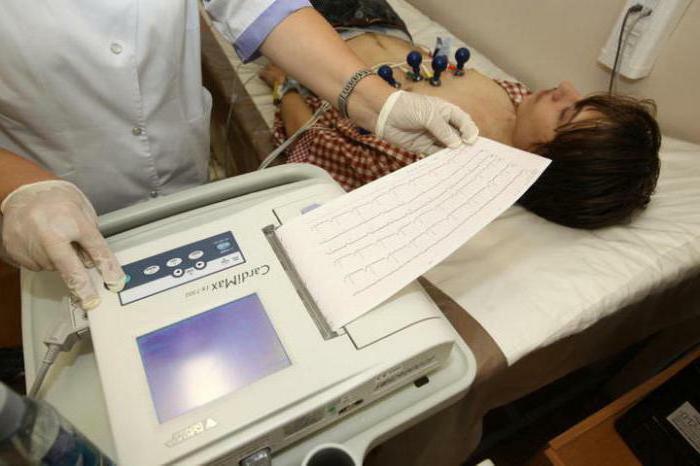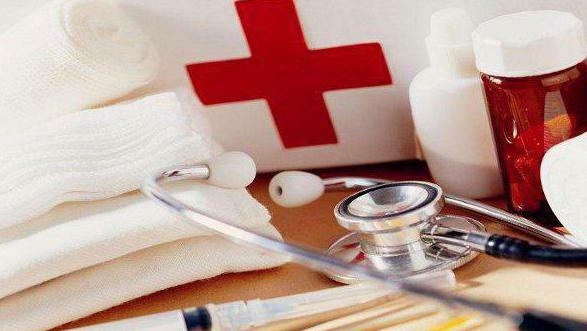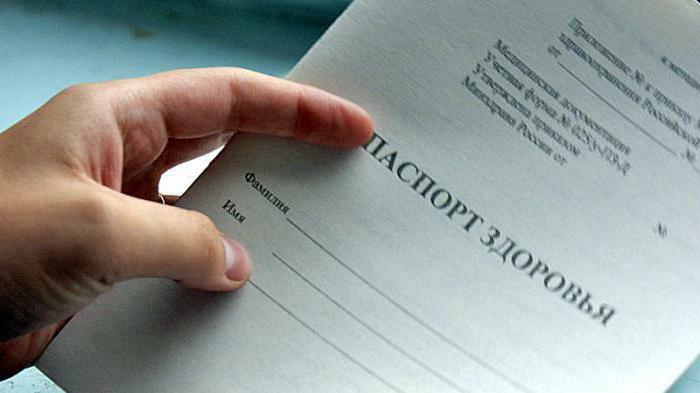Dispensary observation. Organization of dispensary observation. Terms of dispensary observation. Groups of dispensary observation
Clinical examination, or dispensary observation, is a method of monitoring the health status of certain groups of people. These activities are characterized by periodicity and accuracy. They are needed to clarify the laboratory, radiological and other results of the surveys conducted by persons who are on dispensary records.
Health checkup of healthy persons
It is a mistake that only sick people are affected by medical examinations. Those who do not suffer from any diseases are also observed by specialists with a certain periodicity.
Among healthy people, the following persons undergo follow-up care:
- all children until they reach the age of 14;
- conscripts of military service;
- students of schools, colleges, universities;
- workers of children's institutions;
- workers of food or communal facilities;
- working and disabled women after 30 years;
- health workers;
- disabled veterans of the Second World War, veterans of labor.
The goal of monitoring healthy individuals is to maintain a high level of working capacity, maintain health status, identify diseases in the early stages and the possibility of carrying out preventive measures.

Dispensary observation of patients with
This group of people under observation includes patients with chronic diseases, convalescent patients after acute illnesses and persons with genetic abnormalities and congenital malformations.
The organization of dispensary observation of patients is based on the following activities:
- revealing diseases and their etiological factors;
- prevention of exacerbations, relapses and complications;
- maintaining the level of working capacity and life;
- reduced mortality and disability.

Clinical follow-up after arresting the acute stage of the disease requires carrying out measures to extend the period of remission, as well as rehabilitation measures to restore the functioning of the main organs and body systems.
Main tasks of
Clinical follow-up of patients has specific tasks, which consist in identifying individuals at risk, as well as patients who have a disease at an early stage of its manifestation.
Showing the observation and active measures for recovery, examination of patients, their treatment and recovery after illness. In addition, specialized databases containing information on all persons under surveillance are created.
What are the types of preventive examinations?
- Preliminary inspection - people who go to study or work pass. The main goal - to determine their ability to deal with the chosen case. During the examination, possible contraindications for the chosen profession and the presence of any pathological processes in the body are revealed.
- Periodical inspection - all persons pass in a planned order with a certain periodicity. Each request for help to a medical institution can be used by the local doctor in order to send the patient for a scheduled examination to a narrow specialist.
- Targeted inspection - has certain tasks and a narrow focus. For example, during such an event, patients who suffer from one particular disease are identified.
In addition, dispensary observation can be individual and massive. The individual is held if a particular person seeks help from a doctor, or a home visit was made, if the patient was admitted to hospital for treatment or contacted with an infectious patient.

Mass inspections are conducted in educational institutions, military commissariats, at enterprises. These surveys, as a rule, are of a complex nature and combine periodic inspections and target inspections.
Surveillance teams
After the examination and evaluation of the condition of the person of the latter is attributed to a particular observation group:
- D1 "healthy persons" - do not have complaints and deviations from health;
- D2 "practically healthy" - patients who have chronic diseases in the past without exacerbations, convalescents after acute development of the disease, people in borderline states;
- D3 "chronic patients" - patients with reduced work capacity and frequent exacerbations of the disease, as well as people who have persistent pathological processes that led to the development of disability.
What does the medical examination consist of?
Clinical follow-up consists of several main stages. The first of these includes the registration and examination of patients, as well as the formation of groups that need further monitoring. The average medical worker keeps a record of the population lists, rewriting the data about each patient.
The second stage consists of monitoring the health of those who need treatment and preventive measures. The first group of medical examinations is examined once a year at a pre-planned time. As for the rest of the patients, the therapist or the family doctor should use every opportunity to send them for routine examinations.
The group D2 is observed to reduce the risk factors for the disease, to correct hygienic behavior. The obligatory emphasis is put on patients who suffered from acute diseases in order to avoid the development of the chronic process.

For the third group of dispensary follow-up, the specialist draws up a plan in which the principles of individual treatment and health measures are indicated, consultations of narrow specialists, the use of medicines, elements of physiotherapy, and the provision of preventive and rehabilitation measures.
Within a year, after each examination, adjustments are made to the dispensary accounting plan. At the end of the next year of the dispensary control, an epicrisis is filled in which the following points are indicated:
- the patient's initial condition;
- dynamics of survey results;
- conducted activities for the purpose of treatment, rehabilitation and prevention of complications;
- final health assessment of the patient.
In many health care institutions, an epicrisis plan is pasted onto the patient's card, which saves time in filling out summary and interim documents.
The third stage of clinical examination is based on the annual evaluation of the results of the work of the medical institution, consideration of positive and negative results. A review of the implemented activities is carried out and certain adjustments are made for improvement.
Diseases subject to dispensary control
Clinical follow-up of chronic patients is performed if the following diseases are present:
- of the pathology of the gastrointestinal tract - peptic ulcer, chronic gastritis with decreased secretion, cirrhosis, chronic hepatitis, pancreatitis, chronic ulcerative colitis and enterocolitis;
- pathology of respiratory organs - bronchial asthma, lung abscess, bronchiectasis, chronic bronchitis, emphysema;
- cardiovascular diseases - hypertension, coronary heart disease, heart failure;
- diseases of the urinary system - pyelonephritis, glomerulonephritis, urolithiasis;
- abnormalities of the support apparatus - osteoporosis, osteoarthritis, rheumatoid arthritis.
Under the supervision of a surgeon there are people suffering from varicose veins, endarteritis, phlebitis, thrombophlebitis, post-resection effects.
If in the clinic there are narrow specialists of all orientations, the patient is not registered with his local therapist, but with the doctor who is dealing directly with the clinical case. 
Basic orders
Dispensary observation of all population groups is carried out on the basis of orders of the Ministry of Health.
- Order No. 1006н of 3.12.12 "Approval of the procedure for the prophylactic medical examination of adult population groups".
- Order No. 87n of 6.03.15 for the approval of forms of documentation, which is used in the conduct of such an event as dispensary observation.
- Order No. 800 of 18.06.11 on the procedure for conducting preventive examinations of servicemen and their dispensary supervision. The order was issued by the Ministry of Defense.
Accounting for the planned
In order to keep under control those who need dispensary supervision, and not to miss anything important, there is a special medical documentation.
1. Form No. 278 is compiled at the enterprises, in the educational and preschool institutions by the administration. Here data are entered about each person undergoing preventive examinations: name, date of inspection and final results.
The medical record of an outpatient patient is considered the main document. All cards are stored in a polyclinic file cabinet. In the upper right corner, the letter "D" is marked in red. Here, the reason and date of registration are indicated. After the de-registration, the end date is also indicated here. The card records information about all the patient's examinations by the specialists, the results of the examinations, the appointment of the treatment. This allows the district therapist to assess the completeness of the examination and the general condition of the patient.
3. The epicrisis, filled in according to the results of each year, is made in two copies. One is pasted into the outpatient card, and the second is transferred to the statistics department. All epicrisis checks and signs the head of the department.
4. Form Ж30 - a control card consisting of "D" -account. The control card is created solely for convenience. One document corresponds to one nosological form of the disease. They are located in different boxes, depending on the month when the patient should next come for examination and examination. Monthly average medical workers look through the file cabinet, choose patients who need to undergo examination this month, and send them a call about the need to come to the polyclinic.

Based on the results of the survey, the doctors divide all patients into the following groups of dispensary follow-up:
- group 1 - practically healthy;
- 2 group - patients with chronic diseases without disability;
- Group 3 - patients with disabilities in minor manifestations;
- Group 4 - patients with persistent disability;
- 5 group - completely disabled persons requiring constant care and treatment.
Development of an individual
plan At the beginning of each plan, the specialist specifies the task for the particular patient, since the burden on the district doctors is large enough: through them a large number of people pass and the therapist is unable to remember the small details regarding the health level of the individual patient.
The second section of the individual plan introduces advice and recommendations on the ability to work and possible working conditions. If the patient has a certain group of disability, then the terms of dispensary follow-up and the date of reassessment are indicated.
The next item includes recommendations on dietary nutrition and the time frame for which the patient should adhere to it. The possible level of physical activity and activity is also indicated. 
Features of the treatment and prevention include not only a specific indication of medicines, doses and timing of their use, but also the definition of the method of therapy( in the form of physiotherapy, sanatorium treatment).Also specified are specific dates for the examination of the patient by specialists, and if necessary, the arrival of medical workers at home.
Clinical examination of children
Clinical follow-up of children of the first year of life is conducted massively. A child is examined by a pediatrician every month. Its anthropometric data, the general condition, the work of vital organs and systems are evaluated. This is necessary not only to identify pathologies, but also to prevent their appearance and determine the propensity to these or other diseases.

Dispensary observation of children by the district pediatrician is shown not only to newborns and infants, but also to patients at risk, to persons with chronic diseases and children who do not attend pre-school institutions.
The role of the nurse in the "D" accounting
Clinical follow-up of patients requires a lot of effort and time. An enormous role in the medical examination is played by the average medical staff. The duties of a nurse include:
- maintaining a card index;
- sending the news to patients about the need to visit a polyclinic or a certain specialist;
- outbound control;
- preparation of documents before the next inspection;
- fulfilling doctor's appointments;
- monitoring the performance of medical appointments by the patient;
- home patronage;
- keeping records.
The first visit to the prophylactic center at home is best spent together with a doctor. Pay attention to the patient's living conditions and sanitary and hygienic standards in the place of residence, to find out who has the opportunity to provide it with everything necessary, with whom he lives.
